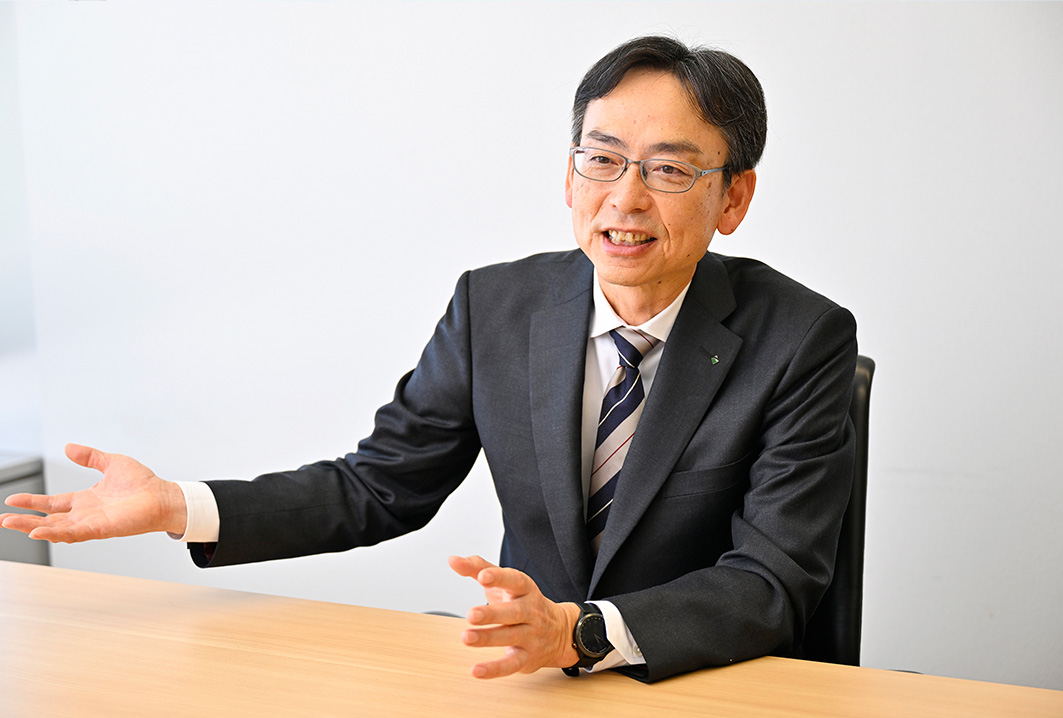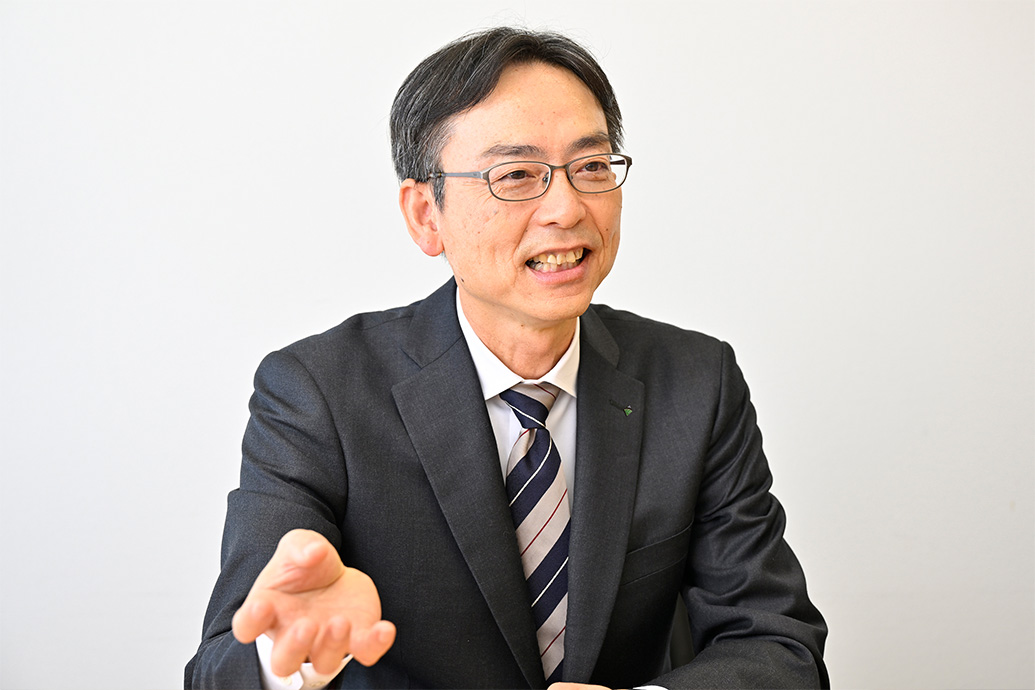STAFF INTERVIEW
Obayashi Corporation, Civil Engineering Technology Division, Dam Technology Department Manager
Katsuhiro Ueko
Digital Transformation (DX) has become an important field of development.
Against the background of a shortage of manpower in the civil engineering industry, efforts are being made to replace human labor with machine through the development and application of automated and autonomous construction technologies, aiming to improve productivity and promote work style reform. Even up to now, we had achieved and introduced automation of cranes and construction machinery. Provided that in situations where minute movements are required depending on the situation, the precision may still not match that of workers.
We are being to attempt enhancement of the learning capabilities of machines and improve their applicability on site.
Furthermore, as a more step to advance form of DX, automation of construction using cutting-edge technologies such as AI and ICT is being promoted.
We are being advanced with practical applications of this technology at the completed Kawakami Dam in 2023 and the under construction of the Shin-Maruyama Dam, which is the largest dam-raising project in Japan.
The technologies that have been automated in dam projects can be applied to the various other fields. Furthermore, dams have long construction periods and extensive work scopes, making them favorable conditions for technological development. It is also a characteristic of dam sites that there is a highly willingness to take on new challenges.
I believe dam sites are passionate and rewarding construction site where various people gather around the vessel of the dam and challenge to new circumstances.
In Japan, we have been a transition from an era of actively constructing new dams to a phase of focusing on maintenance and management. The main construction contents are primarily involve renovations, strengthening, and heightening of a dams.
The Ministry of Land, Infrastructure, Transport and Tourism (MLIT) has also announced proactive promotion of hybrid dams, which append to flood control function to hydroelectric dams, from the perspective of achieving carbon neutrality.
Such renovation and enhancement projects require different technologies compared to new dam constructions.
In addition to digital transformation (DX), we are being carried out collaboratively various departments within the company, including robotics centers and technical research institutes.
Furthermore, dam projects cannot be composed without coexistence with the surrounding environment and local communities. In recent years, the increasing diversification of society, the process of how to listen to the opinions of each individual resident has become more important.
We aim to engage in repeated dialogue with them during the construction period and to build relationships of deep trust with the local communities.

Human resource development is significant task as before. Our young employees today excel in their time management skills including their way of thinking, in their approach to problem-solving, enabling them to efficiently advance their work.
In order to make full use of these attributes, we assign the right people to the right roles and place importance on creating work environments where they can experience growth firsthand.
We anticipate that such experiences will foster an attachment to dam projects and eventually support the development of new technologies of dam.
Dam projects represent the culmination of civil engineering technology and are among the largest man-made structures. And also, dam projects carry a significant mission of protecting lives and property downstream. The dam of the Nam Ngiep 1 hydroelectric power plant in Laos is a huge dam surpass even domestic dams in scale, Obayashi Corp. possesses the capability to realize like this. As the leader of the department in charge of dams, I aim to create a conducive environment for the diverse individuals involved in dam projects and support them in tackling significant challenges.

